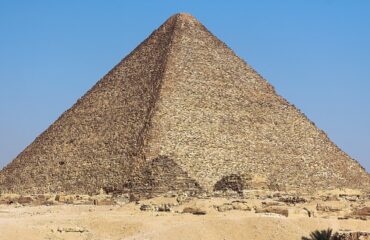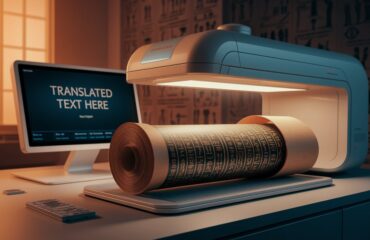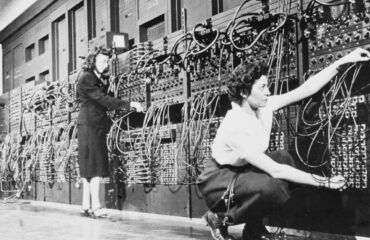By John Bamford
The year is 1945 and the War in Europe had ended.
The Allied nations and the Soviet Bloc scrambled to get their hands on Nazi era technology and rocketry advances, and most importantly on the people involved.

A secret American intelligence program Operation Paperclip brought hundreds of Nazi German engineers, technicians and scientists to the US. Kurt Debus, Eberhard Rees, Arthur Rudolph, Ernst Geissler, and Germany’s premier rocket scientist Wernher Magnus Maximilian Freiherr von Braun were among the many. With Operation Surgeon the British did pretty much the same, and the Soviet Operation Osoaviakhim program captured over 2,000 German specialists for the USSR.
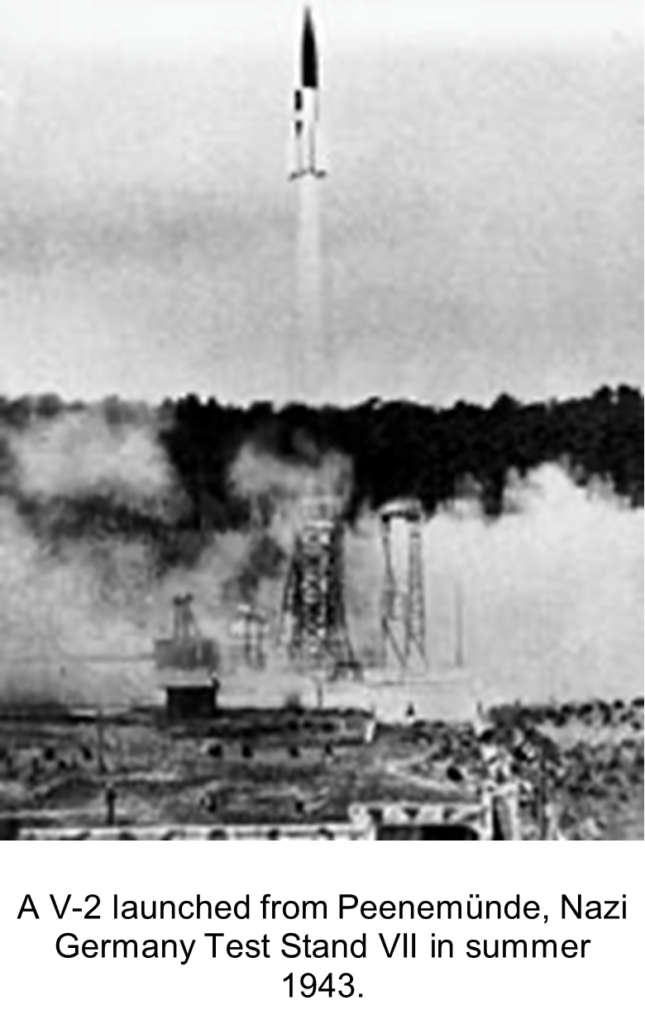
Then came the Cold War and competition between the United States and the Soviet Union in everything from sports to technology to the quality of their kitchens. And on 16 July 1945 at 5:29:45 AM Mountain Time the world’s first plutonium implosion “atomic bomb” was detonated in New Mexico at the Trinity Site. The nuclear arms race was on.
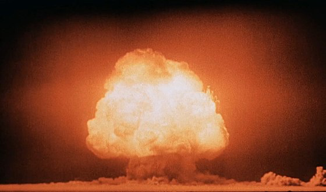
The first detonation of a nuclear weapon code named “Trinity” on 16 July 1945 at 05:29:45 Mountain Time and the mushroom clouds seconds after detonation.
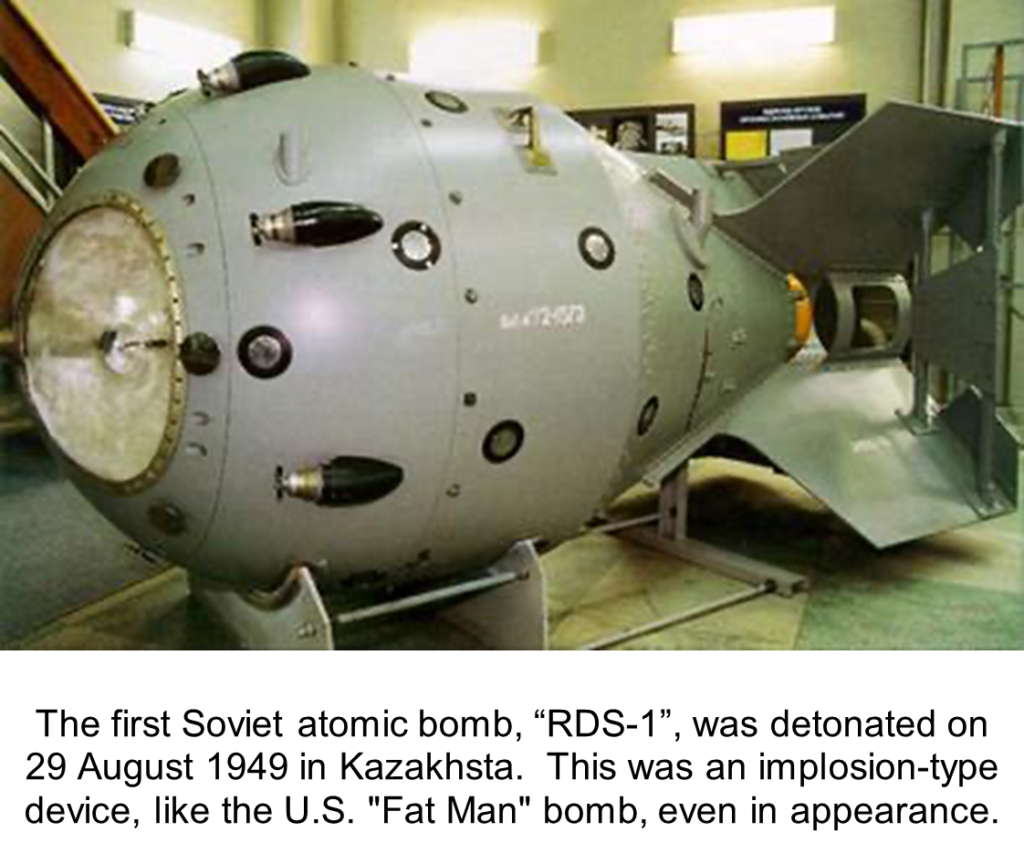
Tensions built. Spy craft and espionage flourished. In the west, suspicions grew that communist spies and infiltrators lurked everywhere. Cases like the Rosenbergs, who in 1951 were convicted of providing top-secret information to the Soviets, were widely published in print and news reels and served to confirm the threats and skullduggery.
In 1956 the US the National Emergency Alarm Repeater (NEAR) program was created to supplement the existing siren warning systems and radio broadcasts in the event of a nuclear attack. And in 1961 these trefoil organ-yellow and black signs began to appear at sites designated as nuclear fallout shelters.

Both sides in the arms race were exploring and exploiting rocketry for military use and space exploration. The Soviets took an early lead in military advantage using rocketry, while the United States initially preferred bombers as their means of weapons delivery.
And then in 1957, came The Beep Heard Round The World (literally).

Launched in present-day Kazakhstan on 4 October 1957 and orbiting the earth every 96 minutes, for 21 days a polished metal sphere 23 inches in diameter, travelled at a velocity of about 18,000 MPH for over 40 million miles in 1,440 completed orbits. Sputnik was visible in the United States during dawn and twilight and people were watching. And they were listening, to a 0.3 second repeating beep broadcast on 20.005 and 40.002 MHz. It was the beep that US Representative Clare Booth Luce called “an intercontinental outer-space raspberry to a decade of American pretensions that the American way of life was a gilt-edged guarantee of our national superiority.” Well, that was a bit harsh but it hit a mark. The American people in particular and the democratic world in general were uneasy and even outright afraid of where Soviet rocketry and space exploration might lead.

Sputnik proved that the Soviet Union had developed an intercontinental ballistic missile (ICBM) system that could deliver nuclear warheads to targets on the other side of the world from the USSR. It made America’s former air superiority obsolete.
“Our movies and television programs in the fifties were full of the idea of going into space. What came as a surprise was that it was the Soviet Union that launched the first satellite.” — John Lodgson, founder of the Space Policy Institute at George Washington University.

In the United States, a national consensus developed that America needed to take the lead in space technology and exploration, for both scientific and military use. And in 1958 the National Aeronautics and Space Administration (NASA) was established to encourage and explore peaceful applications in space science. That same year, the Advanced Research Projects Agency (ARPA) was created to develop space technology for military application. The space race was on. And if space research and exploration was going to be funded by the US government, then there needed to be a lot of public support, and that support would be bolstered by an explosion of publications, radio programs, films, television, and editorials beginning in the 1950s and continuing in the 1960s.




So What Were People Reading About Outer Space?
Well, they were reading lots because space fever was raging. More than had ever been published and read before, in all sorts of written forms: books, pulp magazines, comic books, glossy magazines, and syndicated stories. They read stories about satellites, astronomy, the planets, rocketry, space travel, space exploration, space science, military use of space, interplanetary conflicts, space heroes and heroines, space aliens, UFOs, and flying saucers – lots of flying saucers!
Publications ranged from news articles on the latest events and developments or potential developments, to serious works based on known or conjectured science and technology, to fictional work which attempted to adhere to the science and technology, to fantasy fictional work that wasn’t restricted by scientific fact or sound theory.
Science and Technology Based Publications
In late 1949, a beautifully written and illustrated book was published (and reprinted in January 1950) which introduced people of all ages to the wonders of space exploration. The Conquest of Space, written by Willy Ley and illustrated by Chesley Bonestell (dubbed the “Father of Modern Space Art”), was a sensation. Not only were the illustrations almost photographic (many thought they were) but Willy Ley included enough math to demonstrate escape velocity, propellant mass fraction and orbital mechanics, and many of the things used by NASA to reach for the stars. It included topics like launching satellites and people into space, and a detailed description of a manned moon mission. It was hugely popular and widely read, particularly by the young in schools and universities, with extensive illustrations and descriptions of the planets of our solar system based on the latest information.
Arthur C. Clarke, in his novel 2001: A Space Odyssey, refers to Saturn’s moon Iapetus as “Japetus”, which was the spelling used by Ley in The Conquest of Space.
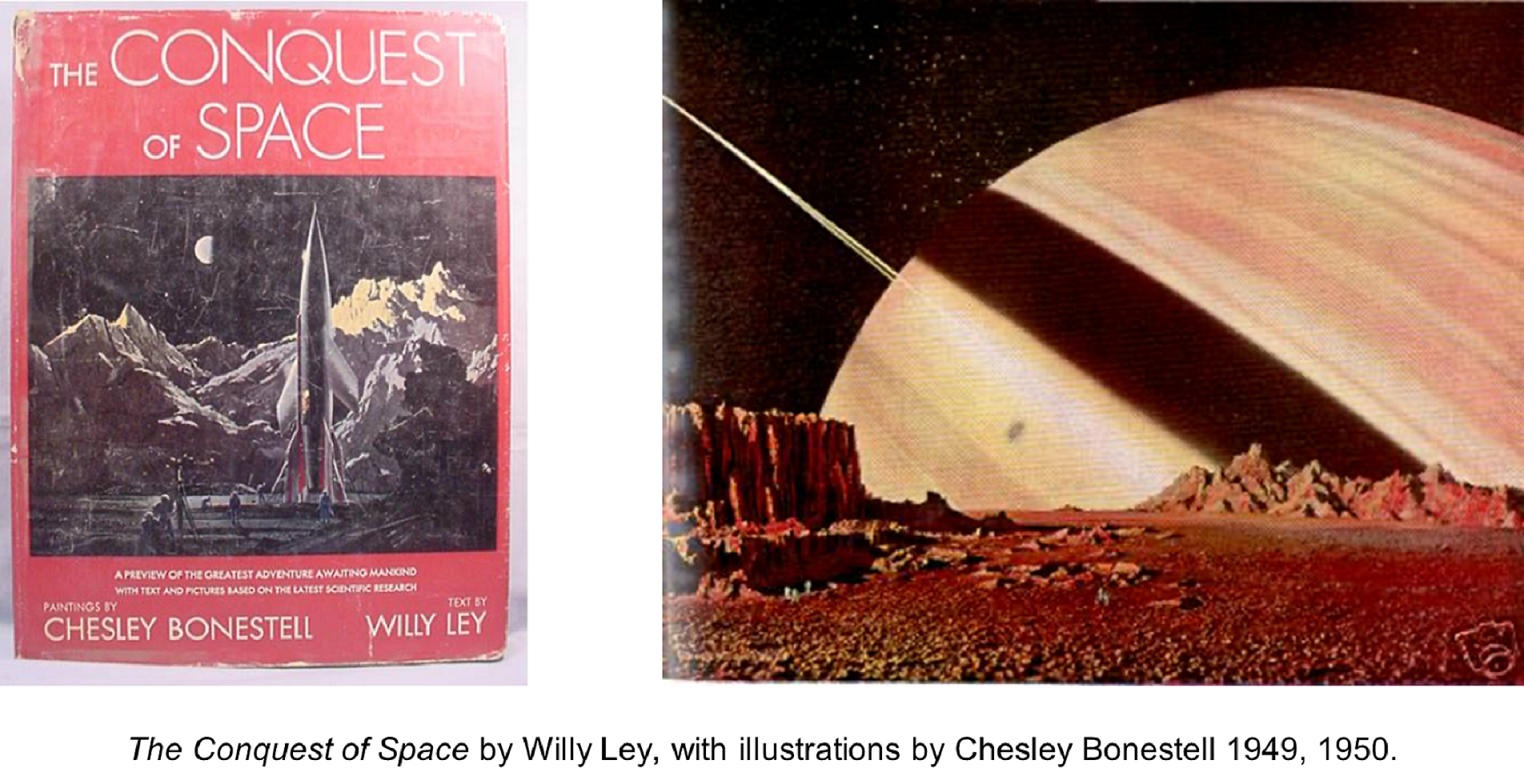
In 1952 the classic Across the Space Frontier, with articles by von Braun, Wily Ley and astronomer Fred Whipple, was published. This was the first in a set of three books that had a deep effect on public understanding and imagination of space travel and exploration.

Across the Space Frontier describes the design and construction of a 250 feet diameter rotating space station. The station would have three decks and a crew of 80, and be transported into orbit using a dozen flights of 3-stage fully re-usable rockets (think now of SpaceX?). The station was located at a highly inclined 2-hour circular orbit at an altitude of 1075 miles which was selected to provide a view of the entire Earth every 24 hours. It would rotate every 22 seconds, providing an artificial gravity of 1/3.
The second book in the set, Conquest of the Moon, published in 1953, describes in detail a 50-person lunar landing and exploration mission based using what would be an already-existing infrastructure with an 80-person space station and a fleet of 15 fully re-usable 3-stage rockets, each with a 36-ton payload capability.

In 1956 the third book of the set was published, The Exploration of Mars.
Interestingly, it was thought at the time that the Martian atmosphere was 10 times denser than we now know it to be, and a winged craft was depicted for landing on Mars using two ships and a crew of 12 “men” (no mention of any women). Of these two ships to Mars, one would be a passenger ship with return fuel which would orbit Mars but not land. The second ship would be a cargo ship which included a lander. The fuel would be hydrazine and nitric acid. There would be 449 days between entering Mars orbit and departing Mars orbit for the return to Earth. A crew of nine would descend to the Martian surface for a stay of about 400 days.
Beginning in 1952, Collier’s, a world leader in circulation magazines, sponsored a gathering of top space experts and published their concepts and scenarios on the exploration of space in a famous series of illustrated articles titled “Man Will Conquer Space Soon”. It included articles by von Braun on his detailed plans for manned spaceflight, and articles by Fred Whipple, Joseph Kaplan, and Heinz Haber. Illustrations were provided by the renowned Chesley Bonestell, Fred Freeman, and Rolf Klep.
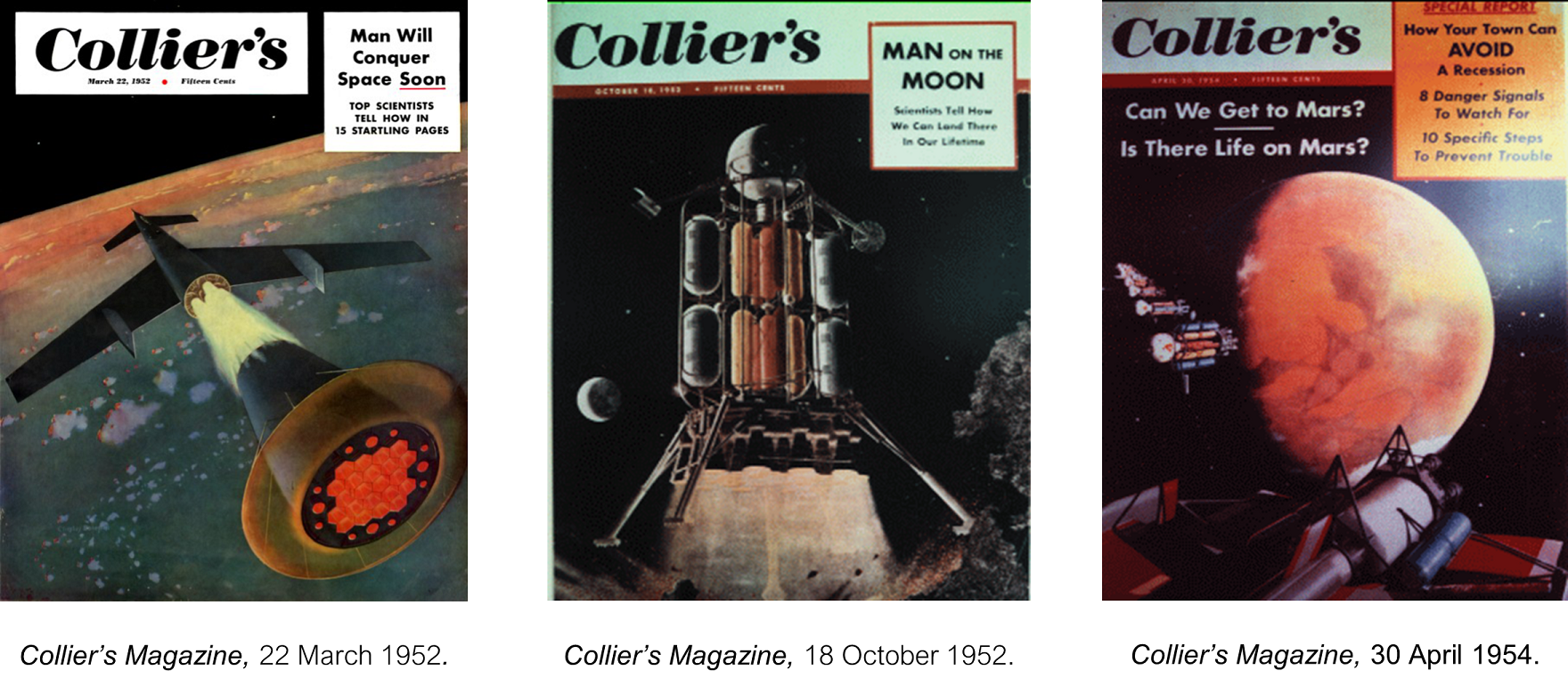
Earth orbit programs, lunar exploration, and lunar surface stations were included with expectations that this would all be accomplished in the 1960s and 1970s.
One of the reasons von Braun took on these writing projects was to generate public interest, excitement and support for investment in space exploration and travel. This was evident in the editorial comment of the first issue of the series on 22 March 1952 titled “Man Will Conquer Space Soon”:
“What you will read is not science fiction. It is serious fact. Moreover, it is an urgent warning that the U.S. must immediately embark on a long-range development program to secure for the West space superiority. If we do not, somebody else will. That somebody else very probably would be the Soviet Union.”
The articles were also the basis for a wildly popular series of three TV programs by Walt Disney (Man in Space, Man and the Moon, and Mars and Beyond) that were broadcast on ABC in 1955 and 1957, inspiring milions of Americans (and people throughout the world) on the possibilities, promise and excitement of space.

Science Fiction
And of course the 1950s and 1960s produced an enormous amount of science fiction, “sci-fi”, and “hi-fi”.

The nickname “sci-fi” was probably first used by Forrest Ackerman in the 1950s, an American science fiction writer, magazine editor, literary agent, and something of a neologist. And today sci-fi is popular and influential all over the world.
Science fiction was of course fictional. It might attempt to adhere to scientific and technological fact and conjecture, or it might be fantasy fictional work without much concern for the facts or conjecture based on what was known. Sometimes it was both.
Sci-fi magazines, sometimes pulp and sometimes glossy, were exploding in variety and readership. They were inexpensive, easily published, readily available, and widely read. In 1946 there were about eight science fiction magazines being published, then more than 20 in 1950, and by the mid 50s more than 40 in the US alone.
Here’s a name: Hugo Gernsback (Gernsbacher), an inventor, writer, editor, and magazine publisher best known for publications including the first science fiction magazine (Amazing Stories in 1926). Along with HG Wells and Jules Verne, he was another “Father of Science Fiction”, which is why the World Science Fiction Convention calls its annual awards the “Hugos”.
Space Opera
There were no musical performances but there was a lot of drama and melodrama in Space Opera. This was about space warfare, intergalactic space adventures and touching romance. Exciting stuff! It had technological and social advancements (or lack thereof) in faster-than-light travel, futuristic weapons, and sophisticated technology, on a backdrop of galactic empires and interstellar wars with fictional aliens of all sorts. It was epic in scale and with personal characters experiencing unimaginable challenges and fighting to overcome them. Sometimes it was called schlock sci-fi when it was particularly, well, schlocky.
Here’s a good example: Imagination Stories of Science and Fantasy. It cost 35 cents in October 1950 to read all about the “Battle for the Stars”, and “The Giants from Outer Space” from May 1954, still 35 cents, was a bargain.
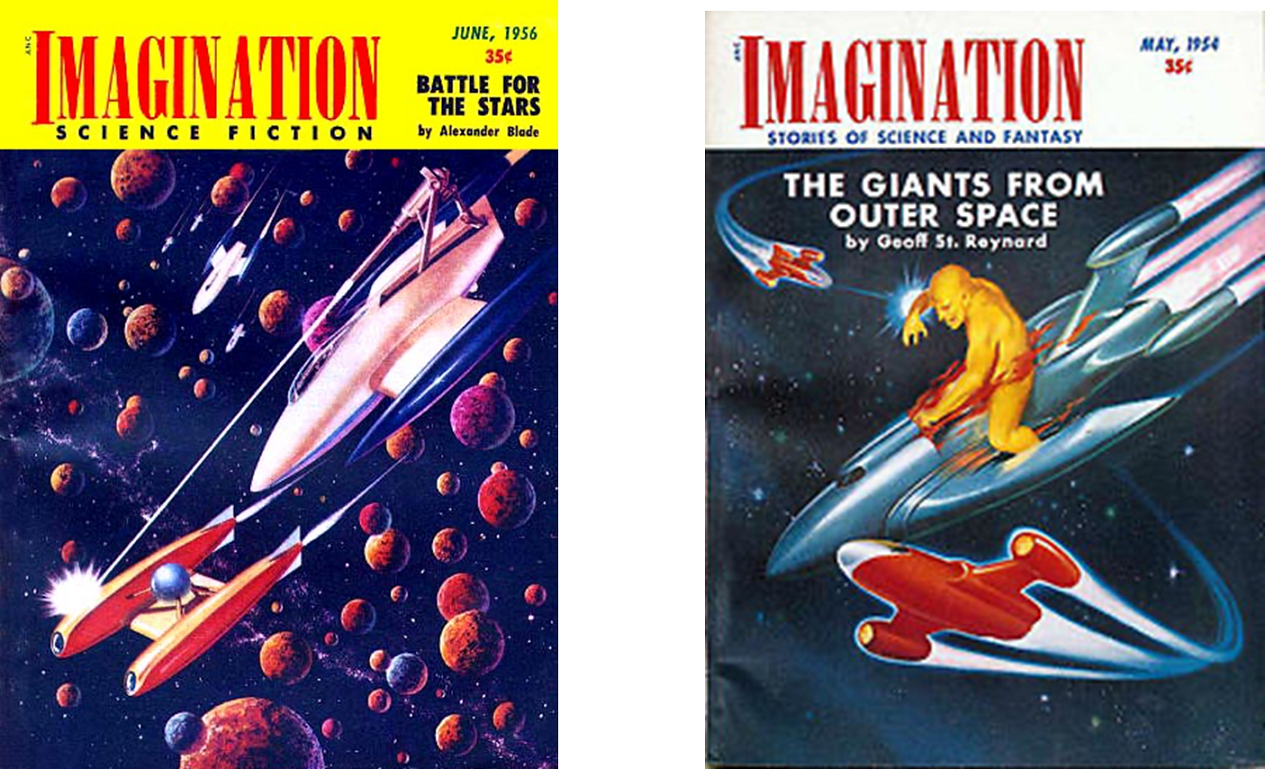
And here’s another: Other Worlds, first published in November 1949. The visuals were gaudy and exciting. And somehow there was often a voluptuous woman alien with mysterious space weapons. Totally makes sense. Intergalactic boys and men take notice. But sometimes (rarely) the stories were actually pretty darn good, including Ray Bradbury’s famous “Martian Chronicle” stories.
Eventually Other Worlds became Flying Saucers from Other Worlds in 1957 and ultimately Flying Saucers, Mysteries of Space which was published until 1976. You get the idea.
Speaking of the term “flying saucers”, it seems to have been used first in describing a meteor that fell over Texas and Oklahoma in 1930 as being like a “flaming flying saucer”. Although the media really popularized the term later in 1947 after a famous siting in June that year by Kenneth Arnold, an America pilot and businessman, over Mount Rainier. Although he never exactly used the term “flying saucer” he did describe the objects as being like “saucers”, “discs”, and that they “moved like saucers skipping across the water”. And the term “flying saucer” made its way into the public imagination in the late 1940s and early 1950s.
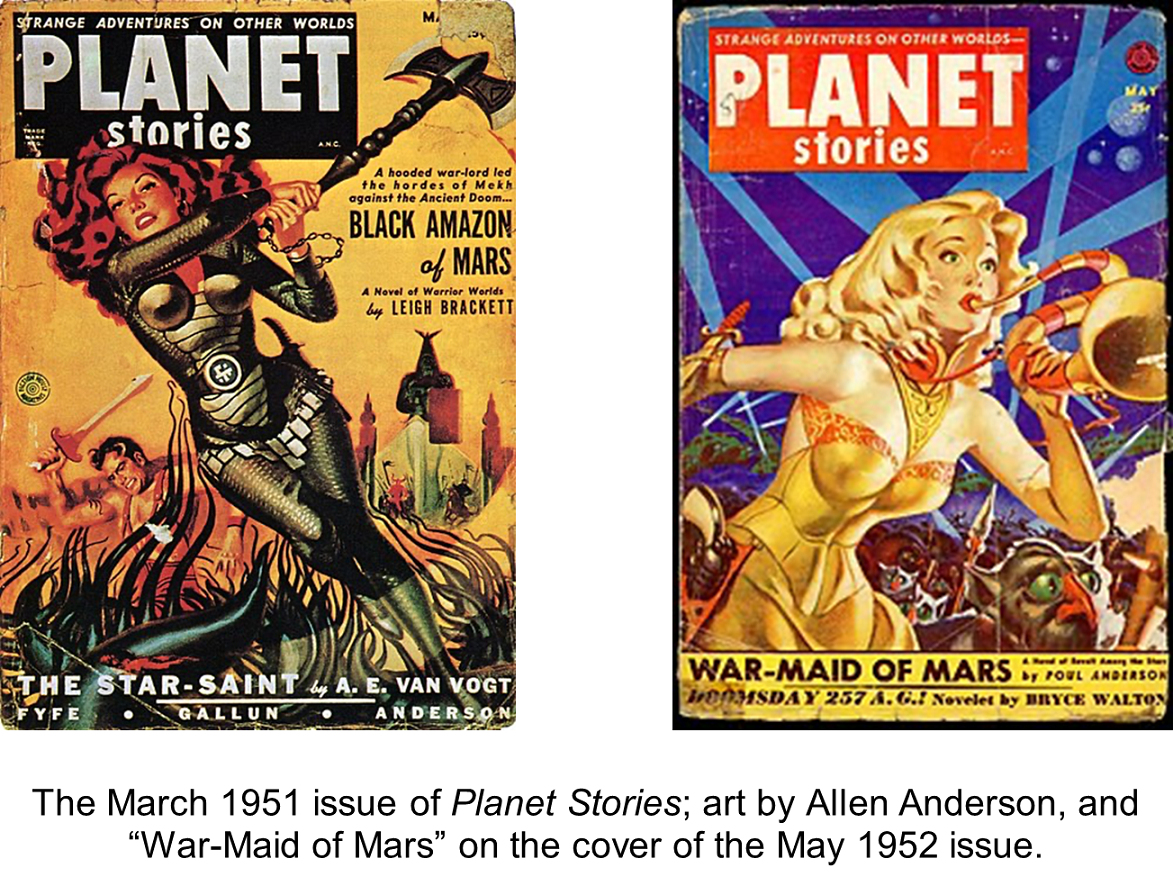
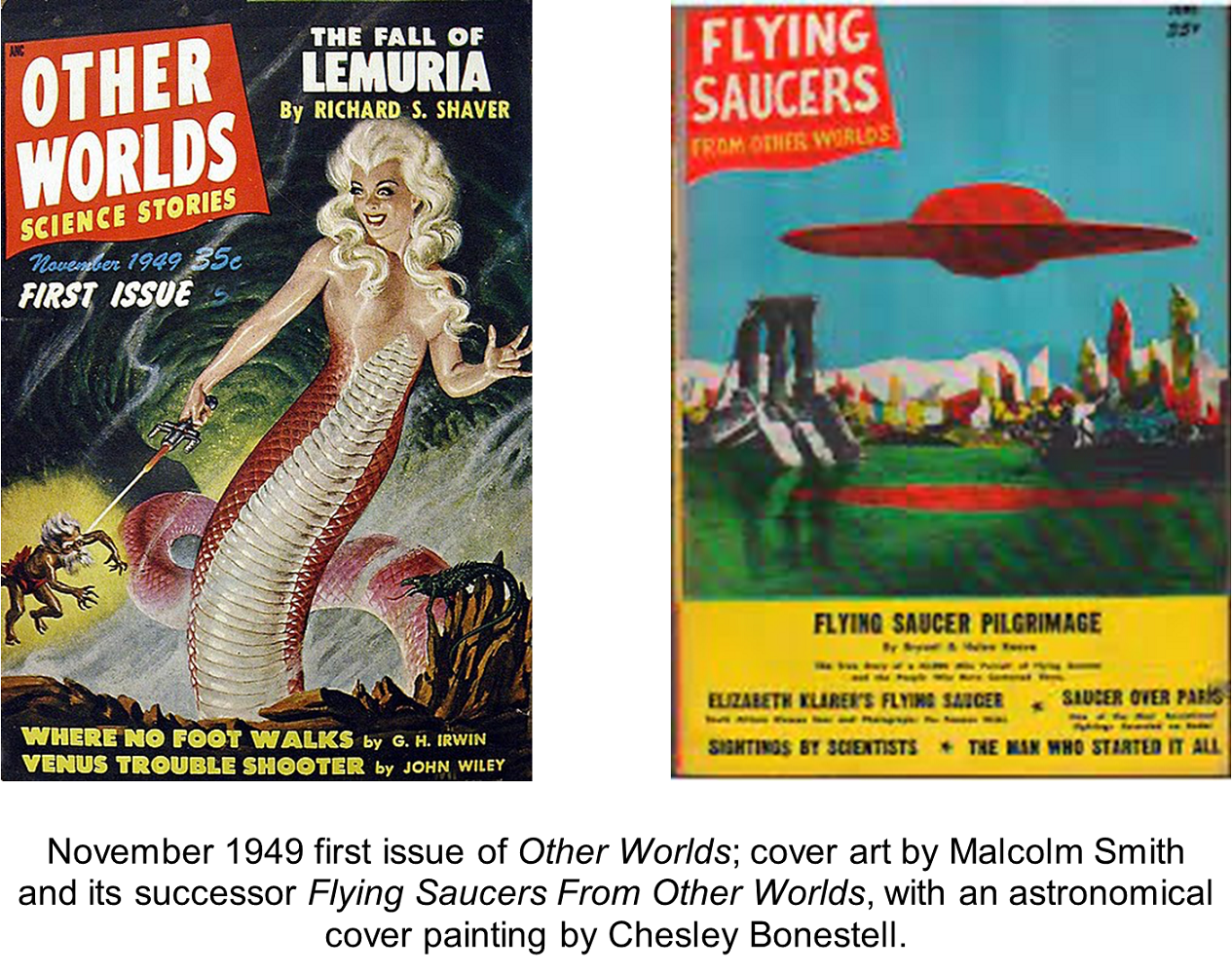
Planet Stories, with interplanetary adventures, initially focused on a young readership with Ray Bradbury being a major contributor. Many of the stories were set on a romanticized depiction of Mars. The covers often depicted voluptuous women with abundant flowing locks, lipstick and mascara, in tight interplanetary body wear, wielding weapons of amazing powers. Well, what did you expect?
And in late 1949 The Magazine of Fantasy and Science Fiction appeared and rapidly became a leading publication in science fiction and fantasy. With no illustrations or letter column and in single column format, it was unlike the leading pulp format magazines. It published many highly regarded stories and became known for its literary content, again making it a standout from the pulp format publications. The renowned Chesely Bonestell was recruited to produce his amazingly realistic astronomical art for covers.

Hard Science Fiction
(So why isn’t Space Opera called “Soft Science Fiction”?)
Hard science fiction was all about the effects and potential of technological progress and inventions. The situations and settings and plot lines were carefully planned and constructed to follow the laws of physics, cosmology, mathematics, and biology. The stories would be designed to make sense, be accurate, logical, credible and follow then known technological and scientific understanding. The beginning of the US space program and the establishment of NASA was a real impetus for the growth of hard space stories.
The Fall of Moondust by Arthur C. Clarke published in 1961 is a great example.
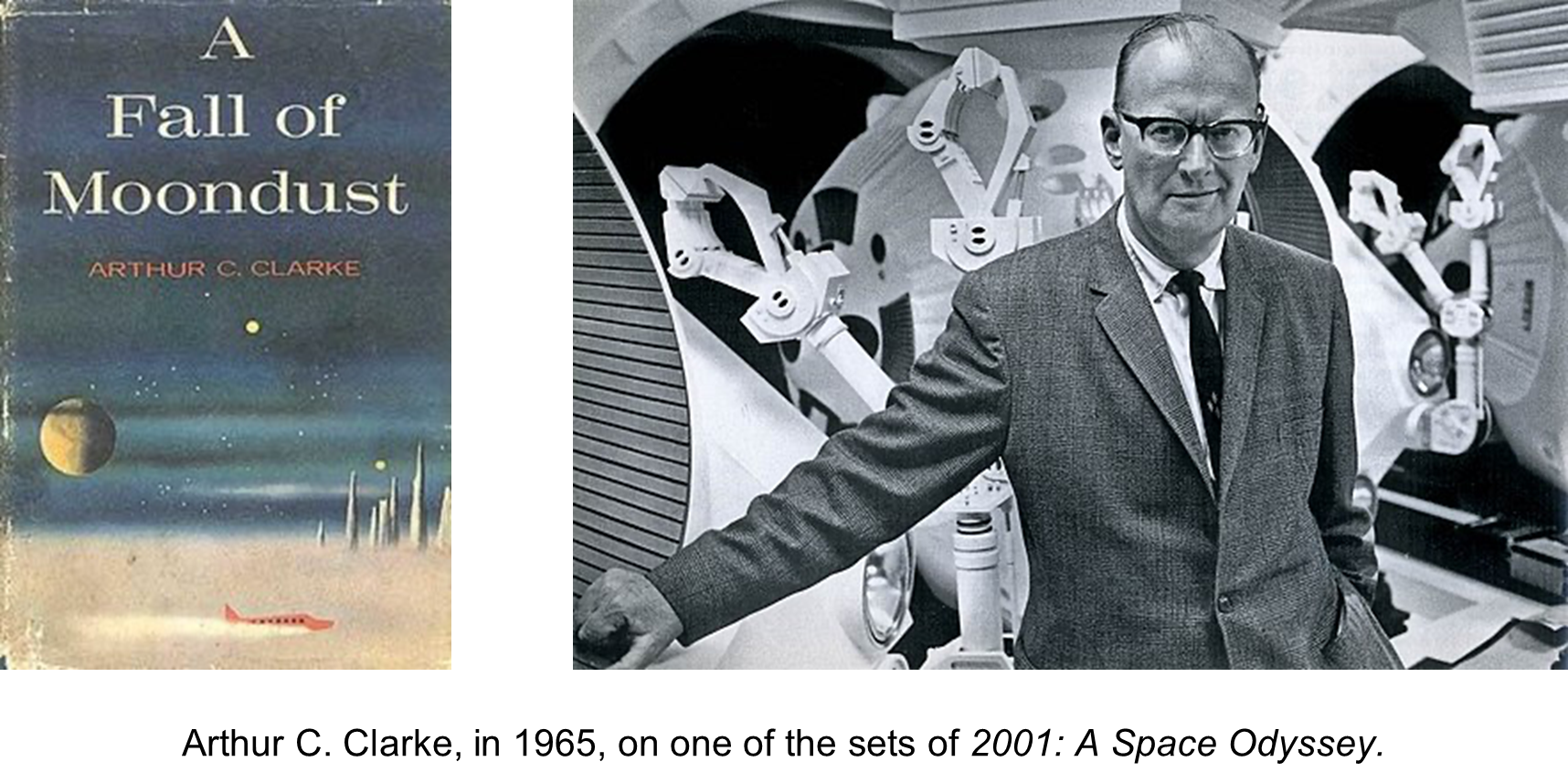
Humans have established a colony on the moon, and the tourist cruiser Selene is carrying crew and tourists on a moon adventure. But they become trapped in a sea of choking lunar dust and time is running out for their rescue. On the surface, the rescuers find their resources stretched to the limit by the mercilessly unpredictable conditions of a totally alien environment. It was quite a story, brilliantly imagined and constructed and full of drama and suspense.
Here’s another example from Larry Niven, an American science fiction writer who early in his writing published a short story titled Neutron Star. It was the tale of Beowulf Shaeffer, a laid-off pilot heavily in debt and easy to blackmail, and how an alien race the puppeteers convinced him to make a dangerous flyby of a neutron star (sounds a bit like Han Solo). The story is set in Niven’s fictional Known Space universe. As the title suggests, the Neutron Star features the existence of a neutron star before their (then hypothetical) existence was widely known.

In 1957, Fred Hoyle, a British astrophysicist, published The Black Cloud, a science fiction novel about an enormous cloud of gas that enters the solar system and threatens to wipe out life on Earth by blocking the Sun’s radiation. The cloud was first discovered by a young Norwegian astronomer who notices a large, circular dark patch that hadn’t been there before. Dramatic, tense, and built on much known science and mathematics, it was a real page turner. Hoyle was also the fellow who coined the term “Big Bang” on BBC radio, a theory which he actually rejected.
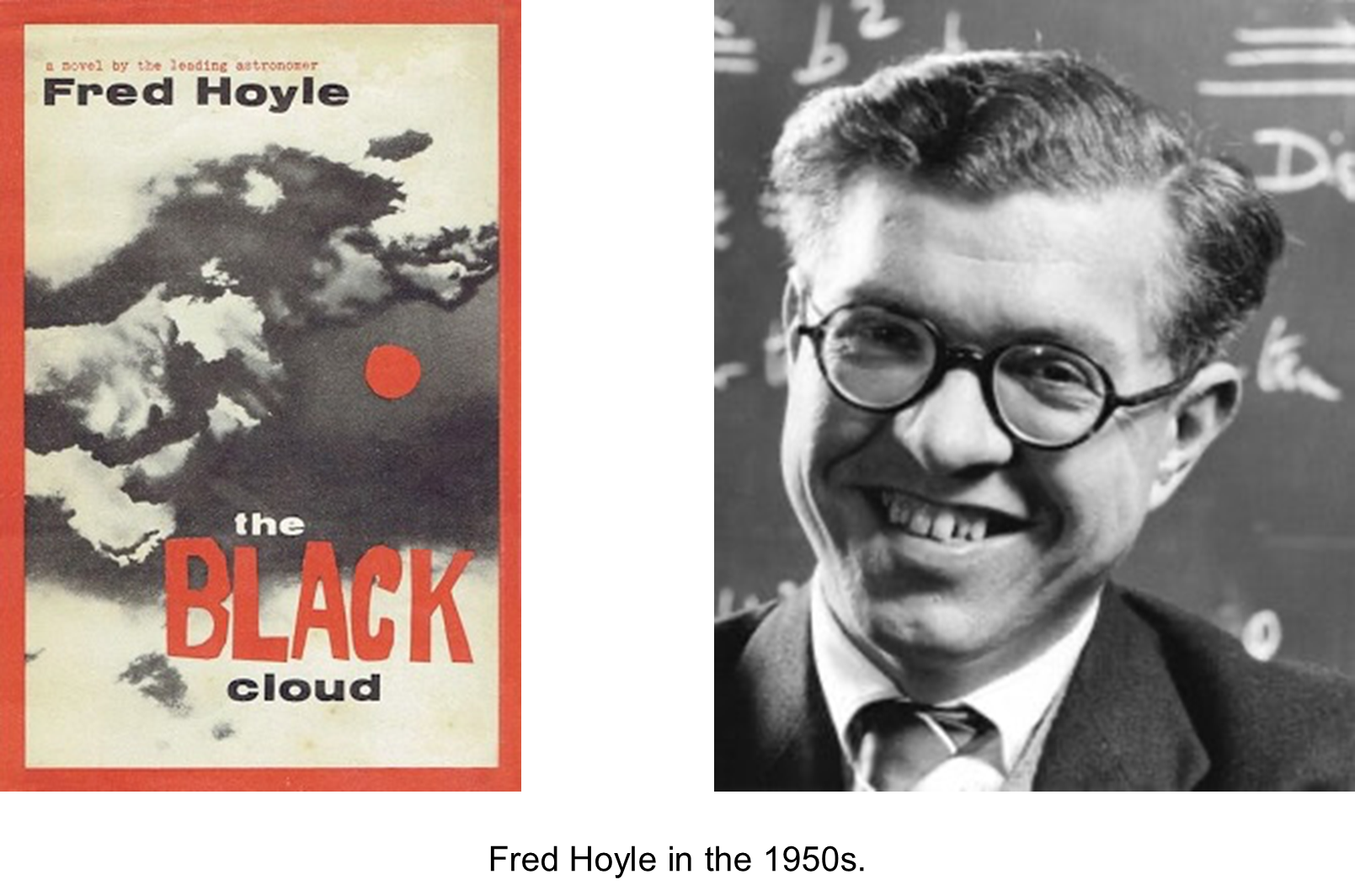 The 1950s were definitely boom years for popular science fiction writing and illustrations. And all this both affected and reflected popular thinking around the world. Publications continued emerge, grow, change and propagate in the 1960s but the 50s were the beginning of the boom. The 50s were also boom years for all sorts of sci-fi and space related films, which continued into the 60s. And then of course there’s television which exploded (or maybe the vacuum tubes just overheated and burned out). But more on that later.
The 1950s were definitely boom years for popular science fiction writing and illustrations. And all this both affected and reflected popular thinking around the world. Publications continued emerge, grow, change and propagate in the 1960s but the 50s were the beginning of the boom. The 50s were also boom years for all sorts of sci-fi and space related films, which continued into the 60s. And then of course there’s television which exploded (or maybe the vacuum tubes just overheated and burned out). But more on that later.
One More Thing!
Not The Thing from Another World. Not yet.
Not Steve Jobs. Not Columbo.

Maybe it’s Space Opera or maybe Hard Science Fiction.
The Magazine of Fantasy and Science Fiction in 1952 and the magazine Sex Science Illustrated in 1956 featured articles written by a fellow named Dr. Robert Shirley Richardson, an astronomer who also published science fiction under the pseudonym Philip Latham.
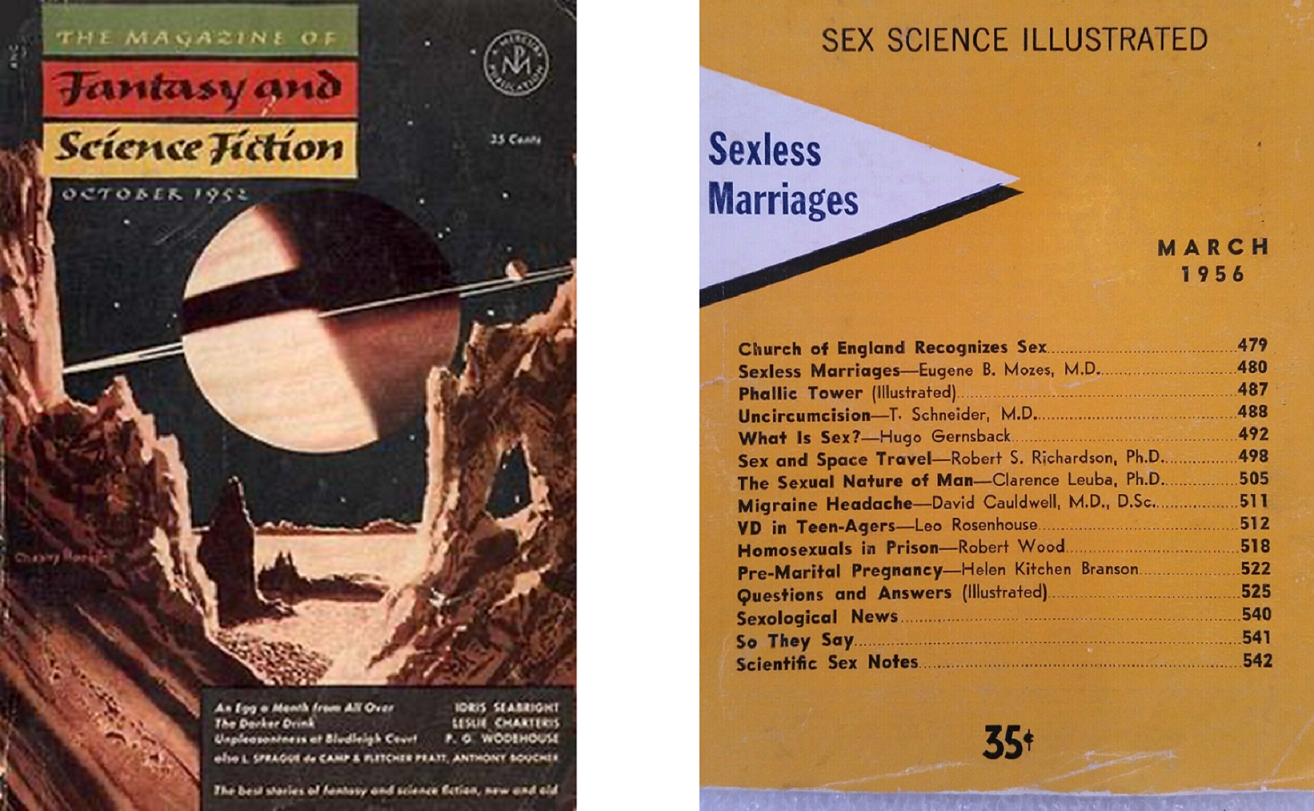
In The Magazine of Fantasy and Science Fiction Richardson wondered (out loud) if exploring other worlds would need “the men stationed on a planet [to be] openly accompanied by women to relieve the sexual tensions that develop among normal healthy males”. It sounds a bit like Dr. Strangelove proposing who should be selected to live in fallout shelters in the event of nuclear war. The images of women in science fiction had always been, well, you’ve seen some of the magazine covers above.
Then in 1956, well before the launch of Sputnik and before the full launch of the Space Age, in the March issue of Sex Science Illustrated (first titled Sexology, the Magazine of Sex Science, founded by guess who, Hugo Gernsback of “Hugos” fame), Richardson wrote an article describing his vision of what sexual relations might look like when space travel became reality.
According to Richardson:
In our expedition to Mars, let our healthy young males take along some healthy young females to serve as their sexual partners. (Of course it would also help if they could operate a radio transmitter and take dictation.) These women would accompany them quite openly for this purpose. There would be no secrecy about this. There would be nothing dishonourable about their assignment. They would be women of the kind we ordinarily speak of as “nice girls.”
 Next Up?
Next Up?
Stay tuned for What Were They Thinking?: Outer Space in Popular Imagination in the 1950s and 1960s In Film and the Motion Pictures

